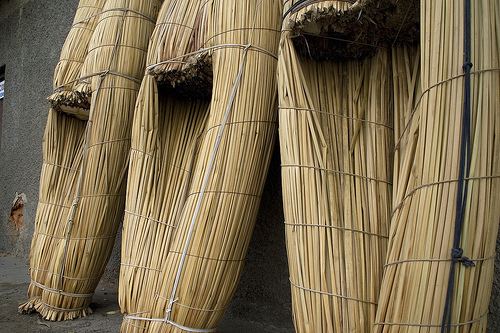Rank Subspecies | ||
 | ||
Scientific name Schoenoplectus californicus ssp. tatora Similar Schoenoplectus, Titicaca grebe, Orestias, Scirpus, Sophora toromiro | ||
Totora plant top 7 facts
Totora (Schoenoplectus californicus subsp. tatora) is a subspecies of the giant bulrush sedge. It is found in South America - notably on Lake Titicaca, the middle coast of Perú and on Easter Island in the Pacific Ocean. The genus Schoenoplectus is closely related to Scirpus and sometimes included therein. This plant can reach a heigth of 6 m (20 ft) and commonly reaches 4 m (13 ft).
The people of the mid-coast region of Perú have used totora to build their caballitos de totora, small rowed and straddled fishing vessels, for at least 3,000 years. The Uru people, an indigenous people predating the Inca civilization, live on Lake Titicaca upon floating islands fashioned from this plant. The Uru people also use the totora plant to make boats (balsas) of the bundled dried plant reeds. In Titicaca it commonly grows at a water depth of 2.5–3 m (8.2–9.8 ft), but occurs less frequently as deep as 5.5 m (18 ft).
The Rapanui people of Easter island used totora reeds – locally known as nga'atu – for thatching and to make pora (swimming aids). These are used for recreation, and were formerly employed by hopu (clan champions) to reach offshore Motu Nui in the tangata manu (bird-man) competition. How the plant arrived on the island is not clear; Thor Heyerdahl argued that it had been brought by prehistoric Peruvians but it is at least as likely to have been brought by birds. Recent work indicates that totora has been growing on Easter Island for at least 30,000 years, which is well before humans arrived on the island.
